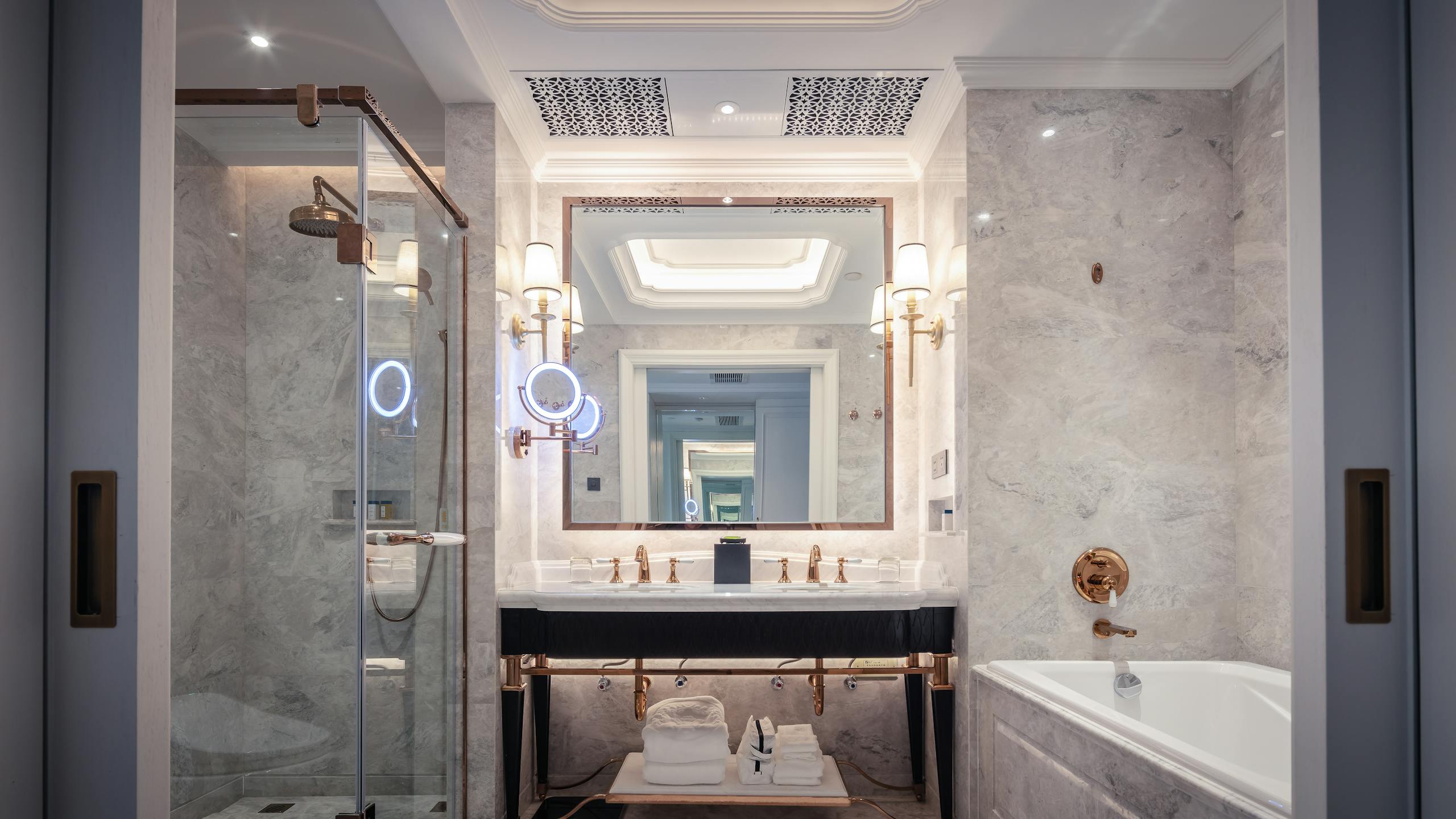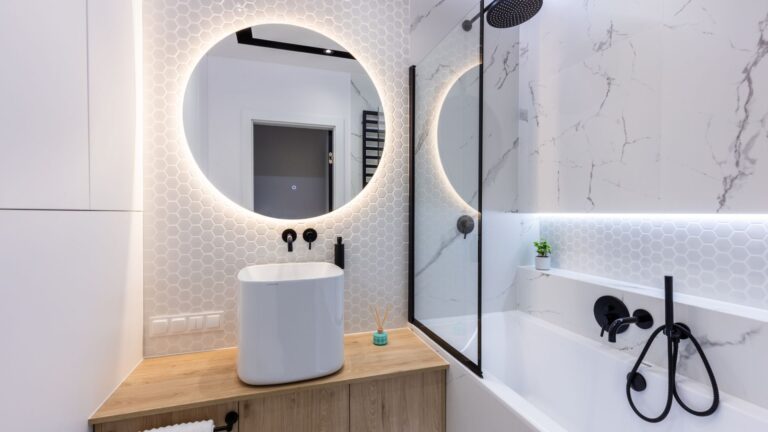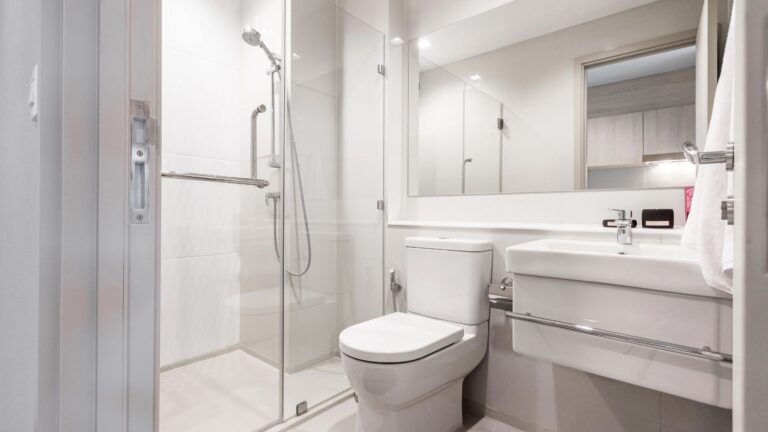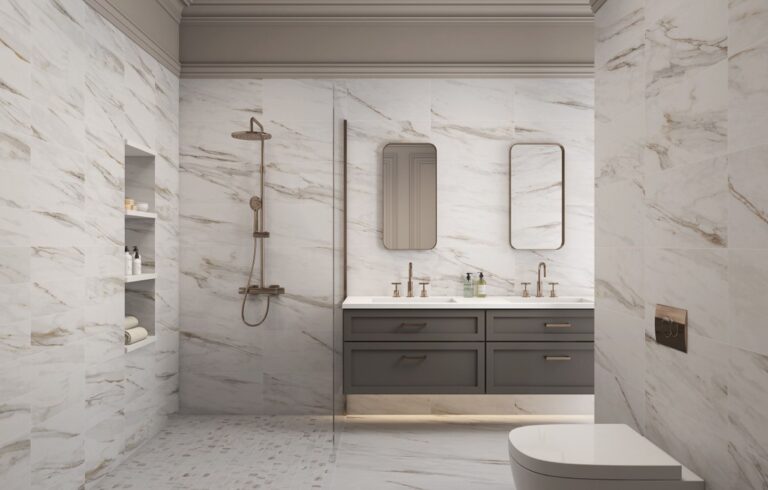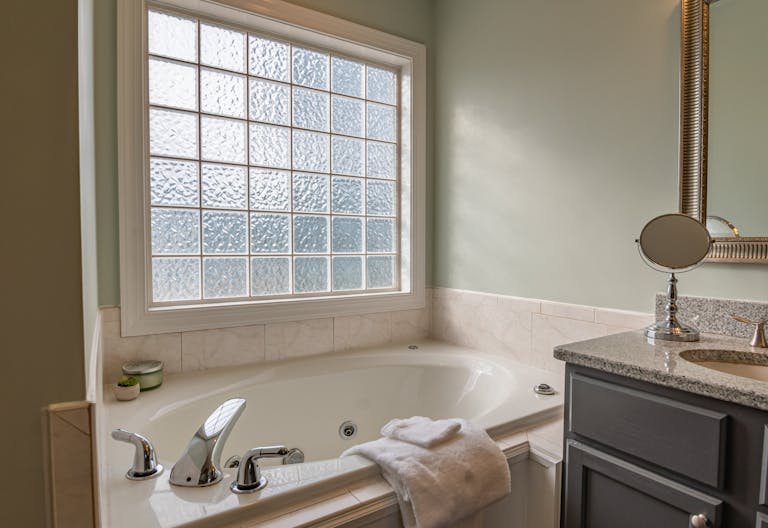Best Bathroom Lighting Layers for Style and Function
Lighting can make or break a bathroom. It determines how clearly you see the mirror during early-morning routines, how soothing the room feels when you unwind in a warm bath, and how safe the floor is for family members who need reliable visibility. Many homeowners focus on fixtures and finishes while overlooking lighting strategy, yet the secret to a welcoming and functional bathroom lies in layering light. The three layers task, ambient, and accent work together to eliminate shadows, highlight design features, and give you total control over brightness and mood. By understanding how each layer functions, you can transform even a modest powder room into a luxurious and practical retreat.
Why This Topic Matters
A bathroom is more than a utilitarian space. It is a personal spa, a grooming station, and sometimes a quiet hideaway. Poor lighting turns shaving, applying make-up, or cleaning into frustrating chores. Shadows under the eyes in the mirror can lead to uneven grooming, while dim corners encourage mold growth and make small bathrooms feel even smaller. Energy efficiency also enters the equation as layered lighting lets you illuminate only the zones you need, saving power and extending bulb life. A thoughtful plan improves safety for children and older adults, adds resale value, and complements every design element from tile to art pieces. In short, layered lighting elevates both practicality and aesthetics, making it a non-negotiable feature in any successful remodel.
Understanding the Three Layers of Bathroom Lighting
Task Lighting: Focus Where It Counts
Task lighting delivers concentrated illumination to functional zones, particularly around mirrors, sinks, and shower enclosures. Its purpose is clarity. A pair of vertical sconces flanking a vanity mirror, for instance, reduces facial shadows and offers balanced light for shaving or skincare routines. LED strips inside medicine cabinets brighten storage without spilling glare into the room. In shower stalls, a moisture-rated recessed fixture ensures you see shampoo labels and footing clearly. Positioning is crucial. Lights should sit at eye level near mirrors to avoid casting harsh light from above. By tailoring brightness and placement, task lighting becomes a dependable partner in daily grooming.
Ambient Lighting: The Foundation of Comfort
Where task lighting focuses, ambient lighting fills. Think of it as the room’s natural daylight substitute. A central ceiling fixture or evenly spaced recessed cans distribute soft light that banishes dark corners and creates a sense of spaciousness. In larger bathrooms, a cove hidden along the ceiling perimeter can wash walls with gentle brightness, making the ceiling appear higher and the room more relaxing. Color temperature matters as well. Choose bulbs between 3000 and 3500 Kelvin for a warm yet crisp atmosphere that flatters skin tones without feeling clinical. Controlled by dimmers, ambient lighting sets the baseline mood whether you start the day energised or end it in a calm state.
Accent Lighting: Highlight and Personalise
Accent lighting adds the finishing touch by drawing attention to architectural or decorative features. A narrow-beam spotlight might showcase textured wall tile, while LED tape under a floating vanity produces an elegant glow that doubles as a nightlight. Backlit mirrors are both functional and visually striking, framing the glass in a halo that hints at luxury spas. Even a small alcove shelf can radiate charm when fitted with discreet lighting to accentuate a favourite plant or sculpture. Accent fixtures should be subtle yet purposeful, guiding the eye and enriching the overall design narrative without overwhelming the senses.
Best Lighting Layouts and Design Ideas
Every bathroom has a unique footprint, yet certain layout principles apply universally. For single-sink vanities, mounting sconces on either side of the mirror at eye height about sixty-five to seventy inches from the floor creates balanced, shadow-free illumination. In double-sink arrangements, replicate the pattern for each mirror or install a wide fixture that spans the vanity’s length, ensuring even light across both stations.
Low ceilings benefit from flush-mount or semi-flush fixtures paired with perimeter recessed cans, replacing the flat glow of a lone overhead light with layered depth. When space allows, a small chandelier or pendant hung safely away from wet zones adds character without compromising safety. Showers deserve at least one dedicated recessed fixture, and tubs can gain ambience from a damp-rated pendant or wall washer aimed at feature tile. By combining these placements, homeowners achieve a harmonious mix of function and flair.
Practical Tips for Functionality and Comfort
Layered lighting works best when paired with smart controls. Installing separate switches or a grouped dimmer system allows instant adjustment from bright task mode to soft evening ambience. Mirrors magnify available light, so position reflective surfaces to bounce illumination toward darker areas. Choose fixtures with high color rendering index ratings ideally ninety or above so paint hues, skin tones, and décor appear true to life. Moisture protection is essential; look for damp- or wet-rated fixtures in showers and near tubs to prevent corrosion and electrical hazards. Energy-efficient LEDs reduce operating costs and generate less heat, keeping the bathroom comfortable during long routines. Finally, plan wiring early in the remodel to avoid last-minute fixture compromises that limit design potential.
Common Bathroom Lighting Mistakes to Avoid
Relying solely on a central ceiling light ranks as the most frequent error. This single fixture casts deep shadows, especially under eye sockets and chin areas, making tasks frustrating. Another mistake is placing vanity lights above the mirror at a steep angle, which highlights forehead glare and darkens the lower face. Bulbs with mismatched color temperatures also ruin visual cohesion, causing some zones to appear cool blue while others glow yellow. Over-lighting is yet another pitfall. A room flooded with intense lumens feels stark and wastes energy. Conversely, under-lighting fails to meet safety standards and can make finishes look dull. Avoiding these missteps ensures your layered plan performs as intended.
How to Choose the Right Solution for Your Space
Begin by evaluating daily routines. If precision grooming is a priority, allocate more lumens to task fixtures. Small bathrooms with limited natural light require stronger ambient sources, while larger ensuites can experiment with dramatic accent effects. Budget considerations guide fixture selection as well. Integrated LED mirrors cost more up-front but offer long lifespans and sleek profiles, whereas classic sconce-and-bulb setups are easy to replace. Measure the room carefully and note electrical junction locations before shopping to guarantee compatible fixture sizes. Seek products marked with the correct safety rating for each zone, and if uncertainty arises, consult a certified lighting designer or electrician. Their expertise can translate visions into code-compliant reality.
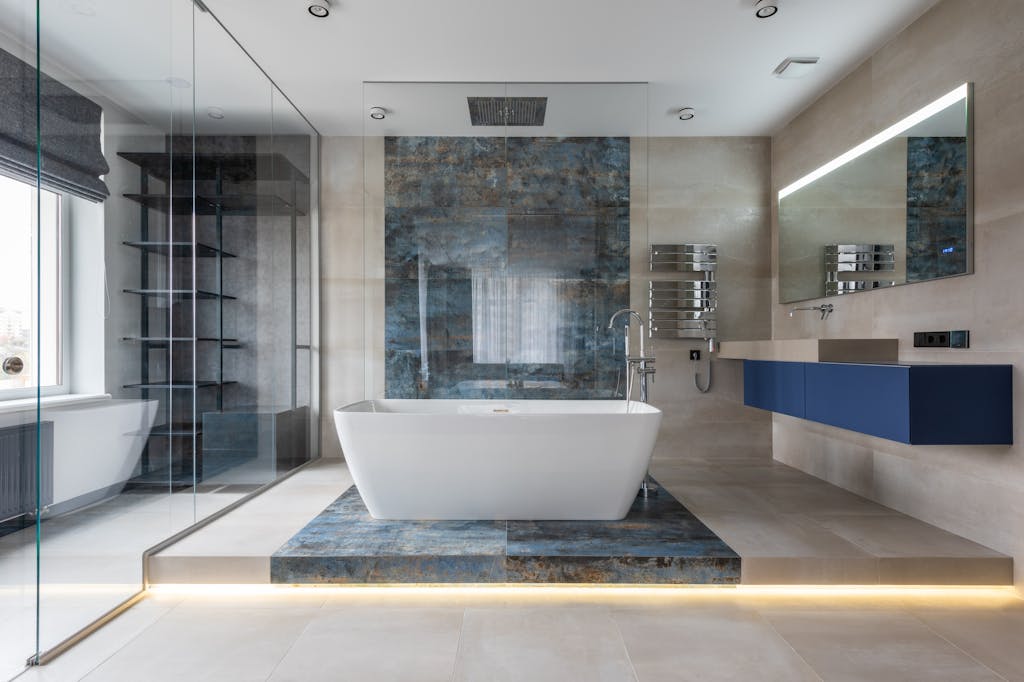
Final Thoughts
Layered lighting turns an ordinary bathroom into a flexible, beautiful, and safe environment. By combining bright, focused task lights with soft ambient fill and tasteful accent highlights, you gain full control over mood and function. Remember to match fixtures to activities, choose cohesive color temperatures, and embrace dimmers for effortless transitions from morning readiness to evening relaxation. If you need help selecting or installing the perfect lighting plan, reach out to us. With expert guidance and a clear strategy, you will enjoy a bathroom that shines in every possible way.

